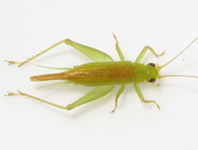Abstract
The genus Phanuromyia in the subfamily Telenominae (Hymenoptera: Scelionidae) consists of 60 described species, for which host records indicate they are egg parasitoids of lanternflies and planthoppers (Hemiptera: Auchenorrhyncha). In this study, we describe a new species of the genus, P. ricaniae sp. n., reared from the eggs of a planthopper, Ricania shantungensis Chou & Lu (Hemiptera: Ricaniidae). This planthopper has been considered as a serious invasive pest in South Korean agriculture. Ricania shantungensis has a wide host range, including economically important crops such as apple, peach, and pear. Phanuromyia ricaniae therefore has the potential to be a biological control agent against ricaniid planthoppers.
References
Choi, D.S., Kim, D.I., Ko, S.J., Kang, B.R., Lee, K.S., Park, J.D. & Choi, K.J. (2012) Occurrence ecology of Ricania sp. (Hemiptera: Ricaniidae) and selection of environmental friendly agricultural materials for control. Korean Journal of Applied Entomology, 51 (2), 141–148.
Choi, D.S., Ma, K.C., Kim, H.J., Lee, J.H., Oh, S.A. & Kim, S.G. (2018) Survey the Occurrences and Establishment of Environment-friendly Control System of Ricania shanthungensis in Jeonnam Province. Korean Journal of Organic Agriculture, 26 (3), 439–452.
https://doi.org/10.11625/KJOA.2018.26.3.439
Chou, I. & Lu, J.S. (1977) On the Chinese Ricaniidae, with descriptions of eight new species. Acta Entomologica Sinica, 20 (3), 314–322.
Folmer, O., Black, M., Hoeh, W., Lutz, R. & Vrijenhoek, R. (1994) DNA primers for amplification of mitochondrial cytochrome c oxidase subunit I from diverse metazoan invertebrates. Molecular Marine Biology and Biotechnology, 3, 294–299.
Johnson, N.F. & Musetti, L. (2003) Redefinition of the genus Phanuromyia Dodd (Hymenoptera: Scelionidae). Journal of the New York Entomological Society, 111 (2), 138–145.
https://doi.org/10.1664/0028-7199(2003)111[0138:ROTGPD]2.0.CO;2
Kim, D.E., Lee, H.J., Kim, M.J. & Lee, D.H. (2015) Predicting the potential habitat, host plants, and geographical distribution of Pochazia shantungensis (Hemiptera: Ricaniidae) in Korea. Korean Journal of Applied Entomology, 54 (3), 179–189.
https://doi.org/10.5656/KSAE.2015.06.0.011
Kwon, D.H., Kim, S.J., Kang, T.J., Lee, J.H. & Kim, D.H. (2017) Analysis of the molecular phylogenetics and genetic structure of an invasive alien species, Ricania shantungensis, in Korea. Journal of Asia-Pacific Entomology, 20 (3), 901–906.
https://doi.org/10.1016/j.aspen.2017.06.008
Mikó, I., Vilhelmsen, L., Johnson, N.F., Masner, L. & Pénzes, Z. (2007) Skeletomusculature of Scelionidae (Hymenoptera: Platygastroidea): Head and mesosoma. Zootaxa, 1571 (1), 1–78.
https://doi.org/10.11646/zootaxa.1571.1.1
Nesheim, K.C., Masner, L. & Johnson, N.F. (2017) The Phanuromyia galeata species group (Hymenoptera, Platygastridae, Telenominae): shining a lantern into an unexplored corner of Neotropical diversity. Zookeys, 663, 71–105.
https://doi.org/10.3897/zookeys.663.11554
Taekul, C., Valerio, A.A., Austin, A.D., Klompen, H. & Johnson, N.F. (2014) Molecular phylogeny of telenomine egg parasitoids (Hymenoptera: Platygastridae s.l.: Telenominae): Evolution of host shifts and implications for classification. Systematic Entomology, 39, 24–35.
https://doi.org/10.1111/syen.12032
Talamas, E.J., Buffington, M.L. & Hoelmer, K.A. (2017) Revision of Palearctic Trissolcus Ashmead (Hymenoptera: Scelionidae). Journal of Hymenoptera Research, 56, 3–185.
https://doi.org/10.3897/jhr.56.10158
Shen, Q., Wang, J.Y., Liu, J.D., Chen, Y.F., Fan, X.H. & Zhu, Y.Q. (2007) [Biology and control of Ricania shantungensis]. Chinese Bulletin of Entomology, 44 (1), 116–118.
Veenakumari, K. & Mohanraj, P. (2014) Five new species of Phanuromyia Dodd (Hymenoptera: Platygastridae) from India. Entomologist’s Monthly Magazine, 150, 135–147.
Veenakumari, K. & Mohanraj, P. (2019) Eight new species of xanthic Telenominae Thomson, 1860 (Platygastroidea, Scelionidae) from India. Zoosystema, 41 (18), 341–358.
https://doi.org/10.5252/zoosystema2019v41a18


